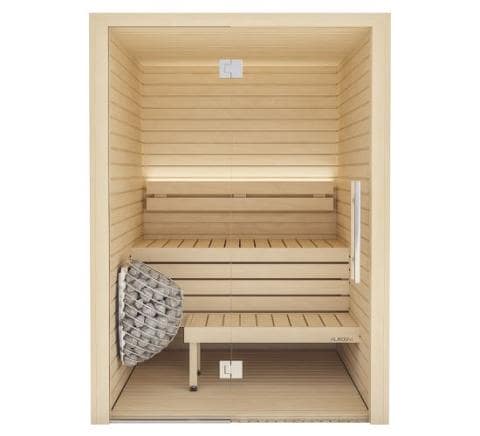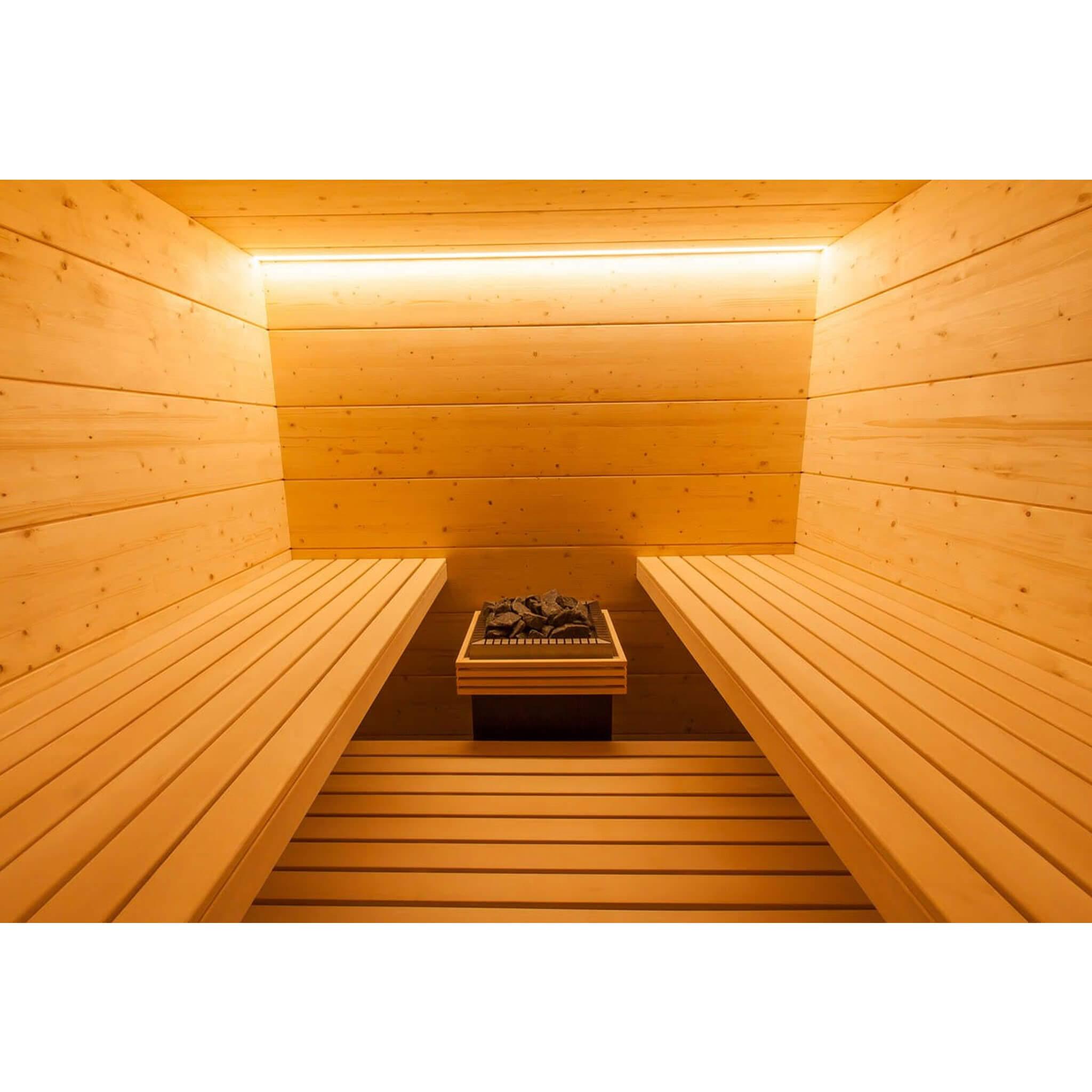Our Traditional Sauna Statements
Our Traditional Sauna Statements
Blog Article
Unknown Facts About Traditional Sauna
Table of ContentsThe Only Guide to Traditional SaunaThe Definitive Guide to Traditional SaunaRumored Buzz on Traditional SaunaExcitement About Traditional Sauna
A lot of the weight lost in a sauna is water loss and is re-gained upon rehydrating. Without a doubt sauna can be a vital component of a healthy and balanced weight loss program. To consider the distinctions in between standard and IR saunas, I will separate these into proven, academic, and made differences.Hence, the best point in the saunawhich is at the ceiling straight over the sauna heateris generally between 185 and 190 F. Traditional Sauna. Claims that a conventional sauna goes beyond 200 F is merely not real and not appropriate for electric saunas offered in the United States. The temperature for a far-infrared sauna is usually established between 120 and 140 F; nevertheless, unlike the conventional sauna, the goal in and IR area is not to achieve a heat
As a result of this, the temperature level difference is virtually irrelevant, because extreme sweating leads to both sauna types, but the method of warming the body is different. In an IR sauna the bather will certainly feel hot and will sweat profusely, yet at much reduced temperatures. Hence, if the goal is to invest longer amount of times in the sauna, the IR sauna is a good option.

Not known Details About Traditional Sauna
When the heat is accomplished, the aspects cycle on and off to keep the high temperature level. Most conventional sauna individuals appreciate pouring water over the rocks to produce heavy steam to increase sauna humidity levels. The benefits of pouring water over the rocks include: making the room much more comfy, dampening the nasal passages, and enabling the use of aromatherapy by blending essential oils with the water.
In a far-infrared sauna, the warm front pass through the body to efficiently heat up the body and increase the body core temperature. To achieve this enhanced temperature, Far-infrared emitters create infrared energy which is close to the same wavelength as that which the body naturally emitsoften referred to as the "Essential Variety" of 7 to 14 microns), so the power is well obtained by the body.
When the power gets in the body, it creates the body temperature level to boost and inevitably causes sweat. In an infrared sauna it's vital for the emitters/heaters to stay on nearly constantly. Since there is no mass of rocks to preserve warmth, the sauna will cool down if the emitters turned off.
As pointed out above, the sauna bather in an infrared area intends to position himself before running emitters to get optimal advantage from the warm. The heating time for both spaces can be very different, depending on how the areas are used. For a traditional sauna, a bather should permit 30-40 mins for the space to accomplish a desired temperature level and to effectively pre-heat the rocks.
Indicators on Traditional Sauna You Need To Know
A well built sauna will commonly achieve a temperature of 150-160 F in concerning 30-40 minutes. For hotter temperatures, the space might require to warm for a longer duration.
To some, 15 mins was "squandered" while the infrared energy my website warmed the timber panels as opposed to heating a body, while others discover a pre-heated space to be a lot more comfy and believe an elevated starting temperature is needed to start perspiring. The length of recommended usage for every space is around the very same (10-15 minutes per session); nonetheless, due to the lower air temperatures and the ability to feel the results of infrared warmth much faster than a traditional sauna, it is not uncommon for a person to spend a total amount of 20-30 mins in an infrared sauna.
Typical saunas often tend to be bigger (therefore utilize more linked here power) than infrared saunas, although typical saunas are definitely offered in one and two person sizes as well. For a two-person conventional sauna, 5x6 or 5x7 dimension is most prominent. The top bench can conveniently seat two or three people and is also long sufficient to relax during the sauna session.


The average expense per kWH of power in the united state is roughly $0.11, so a 4.5 kW heating system will cost about $.50 to compete one hour, if the heater runs constantly for one hour. Generally a sauna heating unit will certainly run for 75% of the first hour and 50% of succeeding hours on considering that the components cycle once the set temperature level is achieved.
8 Simple Techniques For Traditional Sauna
A two person far-infrared space is usually literally smaller than a standard sauna, often regarding 4' x 4' or smaller sized. The IR heating system is usually 1.5-1.7 kW utilizing a 120 volt 15 amp plug-in solution. Considering that the room can be used quicker than a sauna space, we will assume the space is made this article use of for to of an hour consisting of warmth up time.
Ultimately, there is a hardly ever talked about difference in the social experience between both areas. While our culture has actually shed a few of the social advantage of the conventional sauna experience, it can be extremely socially fulfilling. From family time in the sauna, to heart-felt discussions with loved ones, to sauna partiesthe traditional sauna experience can lead to intimate socializing.
Many higher end infrared spaces include tinted light treatment, stereo and full-glass fronts. The size of many spaces enable for 2 people to conveniently utilize the room, while some layouts might enable a 3rd or 4th individual to utilize the space. Custom infrared rooms are additionally offered, with room dimensions available up to 7' x 8' x 7' high.
Report this page